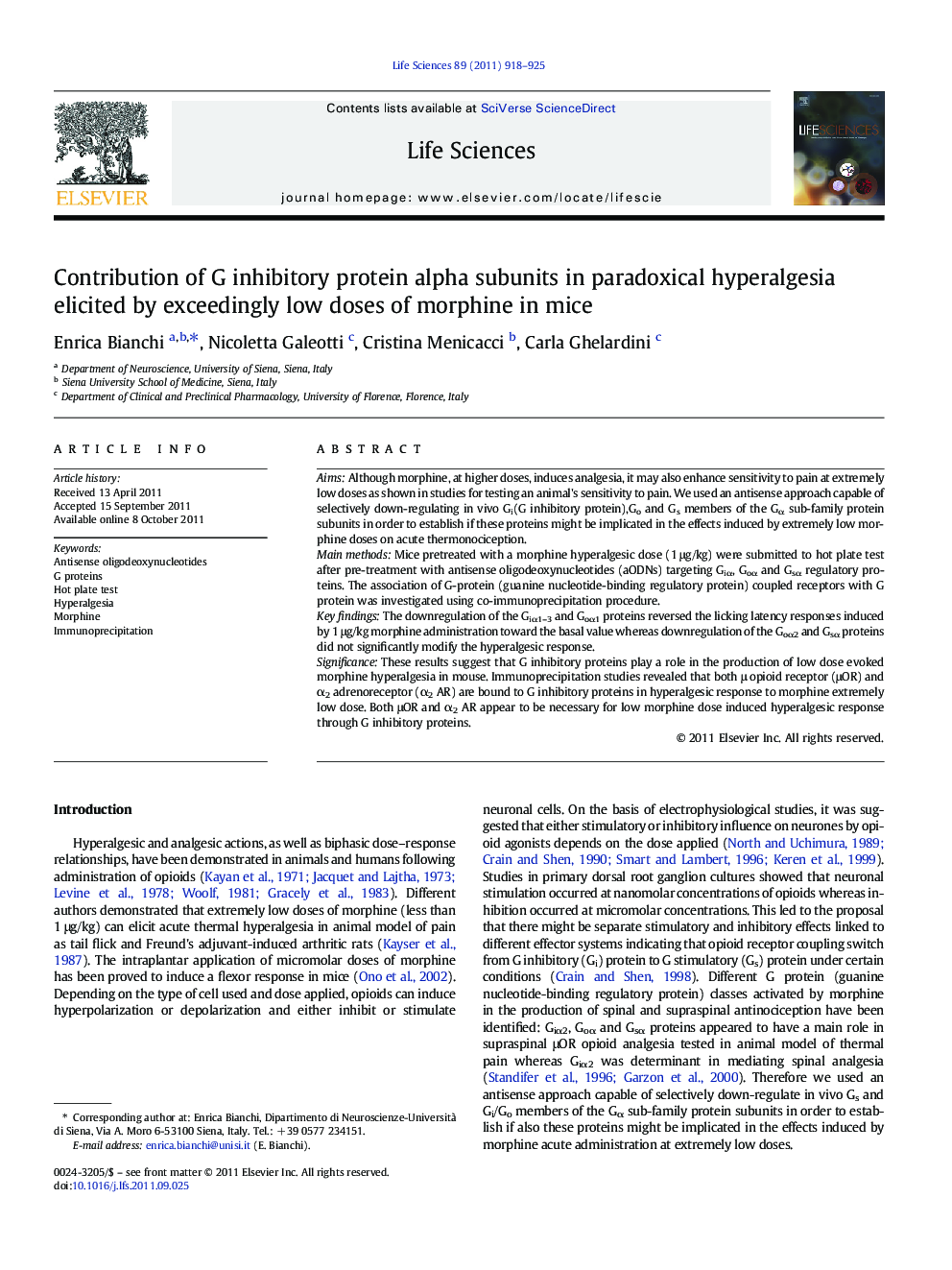| Article ID | Journal | Published Year | Pages | File Type |
|---|---|---|---|---|
| 5842850 | Life Sciences | 2011 | 8 Pages |
AimsAlthough morphine, at higher doses, induces analgesia, it may also enhance sensitivity to pain at extremely low doses as shown in studies for testing an animal's sensitivity to pain. We used an antisense approach capable of selectively down-regulating in vivo Gi(G inhibitory protein),Go and Gs members of the Gα sub-family protein subunits in order to establish if these proteins might be implicated in the effects induced by extremely low morphine doses on acute thermonociception.Main methodsMice pretreated with a morphine hyperalgesic dose (1 μg/kg) were submitted to hot plate test after pre-treatment with antisense oligodeoxynucleotides (aODNs) targeting Giα, Goα and Gsα regulatory proteins. The association of G-protein (guanine nucleotide-binding regulatory protein) coupled receptors with G protein was investigated using co-immunoprecipitation procedure.Key findingsThe downregulation of the Giα1-3 and Goα1 proteins reversed the licking latency responses induced by 1 μg/kg morphine administration toward the basal value whereas downregulation of the Goα2 and Gsα proteins did not significantly modify the hyperalgesic response.SignificanceThese results suggest that G inhibitory proteins play a role in the production of low dose evoked morphine hyperalgesia in mouse. Immunoprecipitation studies revealed that both μ opioid receptor (μOR) and α2 adrenoreceptor (α2 AR) are bound to G inhibitory proteins in hyperalgesic response to morphine extremely low dose. Both μOR and α2 AR appear to be necessary for low morphine dose induced hyperalgesic response through G inhibitory proteins.
